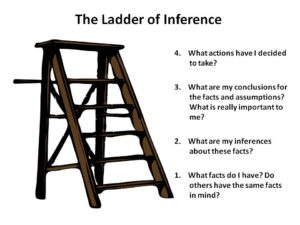Checking your self-image using feedback instruments can help your personal development
Looking in the mirror every now and then to check how you see specific elements of your leadership and how people around you perceive them can be painful but is also very helpful. Although there are various types of instruments, we at Con-TACT have a preference to use the so-called 360degree feedback instruments when we work with people on personal development in a business context. In this setting, it is really important that a person gets feedback on how competencies and skills are perceived by the people around them, including direct reports, boss(es) and peers.

Multi-rater feedback instruments
Since the 1980’s the use of 360degree or multi-rater feedback instruments for individual assessment has increased (see e.g. J.W. Fleenor, J.M. Prince, Using 360-degree Feedback in Organizations). Ideally, an individual gets true 360degree feedback by involving her/his line manager, peers, direct reports and perhaps other individuals inside or even outside their own organisation. This approach has advantages over single-source feedback because the behaviour, skills and abilities are scored by people having a different relation and dependence with the person involved. Moreover, most of the instruments can be used “anonymously”, which is especially important when giving direct personal feedback is not part of the local corporate culture.
In these feedback instruments, the individual also completes the instrument to rate her-/himself. This enables really one of the strongest points of this approach: the individual can compare the “self score” –actually the self-image– with how she/he is perceived by the various classes of respondents. It should be stressed that the instruments in general give feedback on how the skills and behaviour of the person are perceived, it is not about the absolute truth. In some instruments the results obtained are benchmarked with the scores of people in comparable jobs and positions. Downside of this benchmarking can be that it can have the impact of a judgement.
It is our experience that it is especially important for leaders to learn whether their perceived image is congruent with their self-image. This can reveal blind spots (Johari Window) where the individual is having strengths or points for development not known to her-/himself.
Follow-up is essential
Using 360degree feedback instruments without a proper follow-up is generally a waste of time and energy. In our view, the outcome is an important input for awareness and personal development: How can strengths be used in a broader sense? What points need development and how can that be achieved? In that respect we use these instruments often in coaching and as starting point for personal development.
Within Con-TACT we are certified to use a number of 360 degree instruments around leadership, leadership styles and emotional intelligence and also in the context of team performance. In our approach we help people to set up the test. Before they receive the feedback, we explain the model(s) behind and offer help in interpreting the results. In the latter we focus also on received positive feedback and how the person could use these strengths more, so not only on the things that can be improved.
If you want to discuss this subject further get in touch with me direct or check our Virtual Leaders Lounge agenda.
Join us online! 
We explore this and other business relevant subjects in our Virtual Leaders Lounge. This is an informal online meeting of maximum 10 business leaders where we discuss challenges in virtual teams and organisations and share best practices. No PowerPoint is used, no prep work required!
Check it out here or register direct so you get the invitations and have a chance to get one of the 10 seats available for a lounge session.



